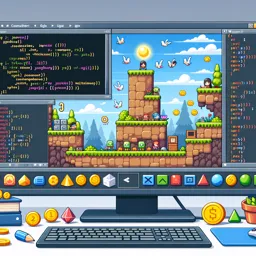Introduction
Unity has revolutionized the landscape of game development with its user-friendly platform and robust suite of tools, making it a favorite among beginners and professionals alike. If you are new to game development or looking to prototype game ideas swiftly, Unity offers the perfect starting point.
Why Rapid Prototyping Matters
Prototyping is a crucial phase in game development. It allows developers to test gameplay concepts, mechanics, and systems quickly before investing significant time and resources into full production. Unity’s drag-and-drop editor, asset store, and extensive documentation make iteration fast and efficient.
Setting Up Your First Unity Project
- Download and Install Unity: Begin by downloading the Unity Hub and installing the latest stable version of Unity.
- Create a New Project: From Unity Hub, start a new 2D or 3D project depending on your game idea.
- Familiarize Yourself With the Interface: Explore the Scene view, Game view, Hierarchy, and Inspector panels to understand how Unity organizes assets and objects.
Bringing Your Idea to Life
- Import Assets: Use the Unity Asset Store to quickly source free or paid assets, or import your own models, textures, and sounds.
- Create Game Objects: Drag objects into the scene and adjust their positions, scales, and rotations to build your game environment.
- Scripting Basics: Attach C# scripts to objects to add interactivity. Unity uses MonoBehaviour scripts, which make it easy to handle events (e.g., player movement, collisions).
Testing and Iteration
Unity provides a Play mode that lets you test your game inside the editor. Use this to experiment, find bugs, and refine gameplay mechanics. Make changes on the fly and immediately see how they affect your prototype.
Sharing and Next Steps
Once satisfied with your prototype, export builds for different platforms, or share your project with collaborators. Unity supports cross-platform development, so you can test your ideas on PC, consoles, and mobile devices with minimal changes.
Prototyping in Unity is an empowering experience that helps you validate creative ideas swiftly. Dive in, experiment, and start building your dream games today!
































